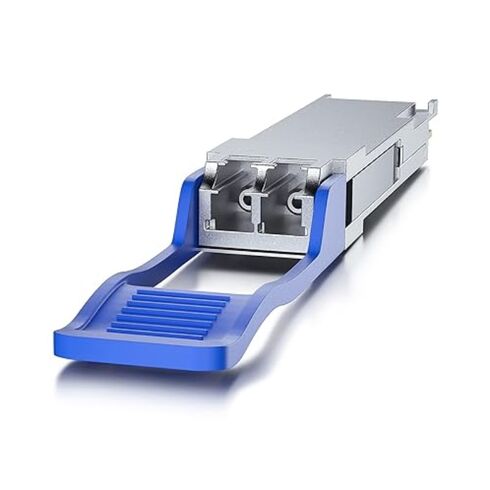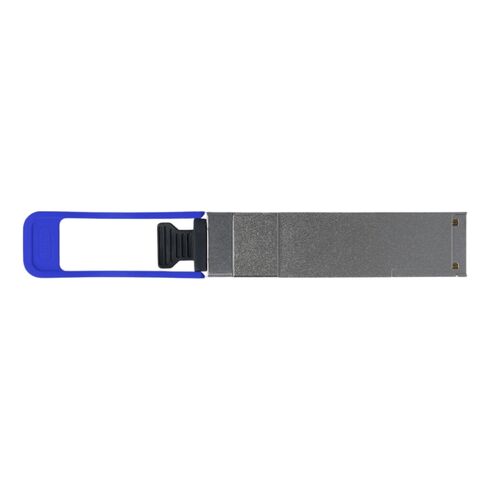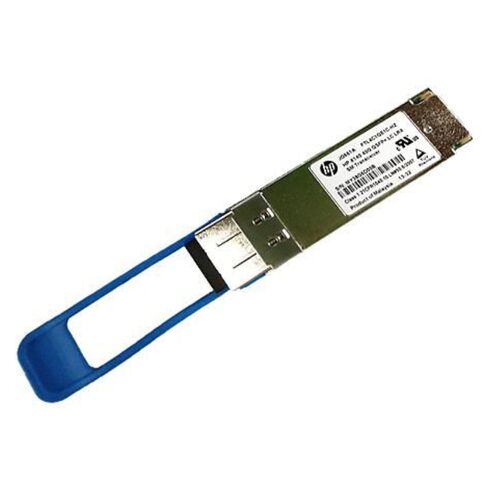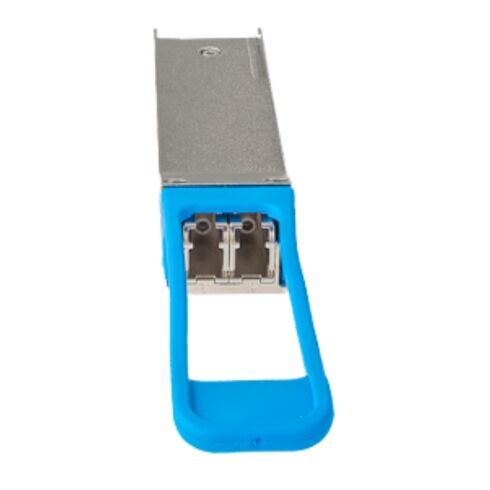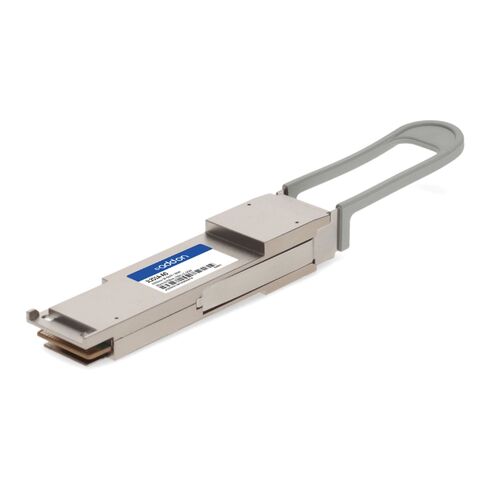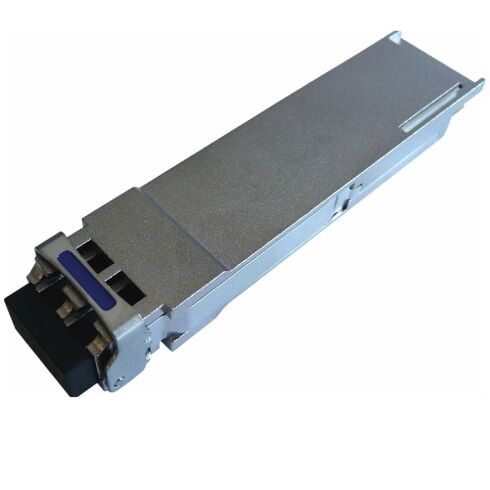JG661A HPE X140 40G QSFP+ Lc Lr4 Sm 1310Nm Transceiver
- — Free Ground Shipping
- — Min. 6-month Replacement Warranty
- — Genuine/Authentic Products
- — Easy Return and Exchange
- — Different Payment Methods
- — Best Price
- — We Guarantee Price Matching
- — Tax-Exempt Facilities
- — 24/7 Live Chat, Phone Support
- — Visa, MasterCard, Discover, and Amex
- — JCB, Diners Club, UnionPay
- — PayPal, ACH/Bank Transfer (11% Off)
- — Apple Pay, Amazon Pay, Google Pay
- — Buy Now, Pay Later - Affirm, Afterpay
- — GOV/EDU/Institutions PO's Accepted
- — Invoices
- — Deliver Anywhere
- — Express Delivery in the USA and Worldwide
- — Ship to -APO -FPO
- — For USA - Free Ground Shipping
- — Worldwide - from $30
Same product also available in:
| SKU/MPN | Warranty | Price | Condition | You save |
|---|---|---|---|---|
| JG661A | 1 Year Warranty | $70.00 | Factory-Sealed New in Original Box (FSB) | You save: $24.50 (26%) |
| JG661A | 1 Year Warranty | Contact us for a price | Excellent Refurbished |
Product Overview
HPE JG661A X140 40G QSFP+ LC LR4 SM Transceiver
The HPE JG661A X140 is an advanced 40G QSFP+ transceiver module, specifically designed to enhance your networking capabilities.
Key Features
- Device Type: QSFP+ Transceiver Module
- Form Factor: Plug-in Module
Networking Specifications
- Connectivity Technology: Wired
- Cabling Type: 40GBASE-LR4
- Data Link Protocol: 40 Gigabit Ethernet
- Optical Wavelength: 1310 Nm
- Maximum Transfer Distance: Up to 10 km (approximately 6.2 miles)
Compatibility
This transceiver module is expertly designed for:
- HP 5900AF-48XG-4QSFP F-bundle
- HP 5900AF-48XG-
Expansion and Connectivity Options
- Interfaces: 1 x Ethernet 40GBASE-LR4
Speed
The HPE JG661A Transceiver is an exceptional networking device that offers a remarkable speed of 40G. This high-speed capability is of utmost importance in today's fast-paced business environment where data transfer needs to be swift and efficient. In this section, we will discuss the benefits and importance of the 40G speed feature for users.
Enhanced Data Transfer
With a speed of 40G, the HPE JG661A Transceiver enables users to transmit and receive data at an incredibly fast rate. This is particularly advantageous for organizations that handle large volumes of data on a daily basis, such as data centers or enterprises with high network traffic. The increased speed ensures that data can be transferred quickly and seamlessly, minimizing delays and enhancing overall network performance.
Improved Efficiency
By utilizing the 40G speed feature of the HPE JG661A Transceiver, users can significantly improve their network efficiency. The faster data transfer rate allows for quicker access to information, resulting in enhanced productivity and streamlined operations. Whether it's transferring large files, accessing cloud-based applications, or conducting real-time video conferences, the 40G speed ensures that tasks are completed efficiently, saving valuable time for users.
Future-Proof Solution
Investing in a networking device with 40G speed capability, such as the HPE JG661A Transceiver, provides users with a future-proof solution. As technology continues to advance at a rapid pace, network requirements are expected to increase. By opting for a transceiver with 40G speed, users can ensure that their network infrastructure is prepared for future demands. This eliminates the need for frequent upgrades or replacements, saving both time and resources in the long run.
Compatibility
The HPE JG661A Transceiver's 40G speed feature is compatible with a wide range of networking equipment. Whether you are using switches, routers, or other devices, this transceiver seamlessly integrates into your existing network infrastructure. This compatibility ensures a smooth transition and easy integration, reducing downtime and eliminating the need for additional investments in new equipment.
Scalability
The 40G speed offered by the HPE JG661A Transceiver allows for scalability in network expansion. As businesses grow and their data transfer requirements increase, this transceiver can accommodate the growing demands without compromising performance. Users can easily scale their network infrastructure by adding more 40G-capable devices, ensuring that their network can handle the increased workload effectively.
Interface
The HPE JG661A Transceiver features a QSFP+ interface, which offers various benefits and plays a crucial role in ensuring efficient data transmission. In this section, we will explore the importance of the QSFP+ interface and its advantages for users.
High-Speed Connectivity
The QSFP+ interface of the HPE JG661A Transceiver provides high-speed connectivity, enabling users to establish fast and reliable network connections. This interface supports data transfer rates of up to 40Gbps, facilitating seamless communication between network devices. Whether it's transmitting large files or streaming high-definition media, the QSFP+ interface ensures that data is transmitted swiftly and without any compromise in quality.
Compact Design
The compact design of the QSFP+ interface makes it an ideal choice for environments with limited space. The small form factor allows for higher port density on networking devices, enabling users to connect multiple transceivers within a confined area. This space-saving feature is particularly advantageous in data centers or server rooms where maximizing rack space is essential.
Hot-Pluggable
The HPE JG661A Transceiver's QSFP+ interface is hot-pluggable, which means it can be inserted or removed from a device without interrupting the operation of the entire network. This hot-swappable capability provides flexibility and convenience, allowing for easy installation and replacement of transceivers. It eliminates the need to power down the network equipment, reducing downtime and minimizing disruptions to network operations.
Flexible Connectivity Options
The QSFP+ interface supports various connectivity options, enabling users to connect their HPE JG661A Transceiver to a wide range of devices. This interface is compatible with copper and fiber optic cables, providing flexibility in choosing the most suitable connection medium for specific networking requirements. Whether it's short-range or long-range connectivity, the QSFP+ interface ensures that users have the flexibility to adapt their network infrastructure to meet their unique needs.
Interoperability
The QSFP+ interface of the HPE JG661A Transceiver offers interoperability with other networking devices that support the same interface. This compatibility allows for seamless integration with switches, routers, and other network equipment from different manufacturers. Users can mix and match devices without worrying about compatibility issues, providing them with the freedom to choose the best equipment for their specific networking needs.
Connector
The HPE JG661A Transceiver features an LC connector, which offers numerous benefits and plays a critical role in ensuring reliable and efficient data transmission. In this section, we will delve into the importance of the LC connector and its advantages for users.
High Transmission Quality
The LC connector of the HPE JG661A Transceiver ensures high transmission quality by minimizing signal loss and interference. This connector utilizes a small form factor, allowing for precise alignment of fiber optic cables. The accurate alignment reduces insertion loss and back reflection, resulting in enhanced signal integrity and improved overall transmission quality. Users can rely on the LC connector to deliver high-performance connectivity for their critical data transfer needs.
Space-Efficient Design
The LC connector's small form factor makes it a space-efficient solution for connecting fiber optic cables. This compact design enables higher port density on networking devices, maximizing the utilization of available space. In data centers or telecom rooms where space is at a premium, the LC connector allows for more efficient cable management and reduces clutter, simplifying network maintenance and troubleshooting.
Easy Installation
The HPE JG661A Transceiver's LC connector features a push-pull mechanism that allows for easy installation and removal of fiber optic cables. The simple yet secure connection mechanism ensures a reliable and stable connection without the need for additional tools or equipment. This ease of installation saves time and effort, especially in situations where frequent cable changes or replacements are required.
Interchangeability
The LC connector is interchangeable with various types of fiber optic connectors, providing users with flexibility in their network design and connectivity options. Whether it's connecting to other LC connectors or different connector types such as SC or ST, the HPE JG661A Transceiver's LC connector ensures seamless interoperability. This interchangeability eliminates compatibility concerns and allows users to choose the most suitable connectors for their specific networking requirements.
Wide Application Range
The LC connector is widely used in various industries and applications, making it a versatile choice for different networking environments. It is commonly employed in data centers, telecommunications networks, and enterprise networks due to its reliability, performance, and compatibility. The HPE JG661A Transceiver's LC connector ensures that users can rely on a proven and widely adopted solution for their critical connectivity needs.
Cable Type
The HPE JG661A Transceiver supports LR4 cable type, which offers significant benefits and plays a crucial role in ensuring reliable long-range data transmission. In this section, we will explore the importance of the LR4 cable type and its advantages for users.
Long-Range Connectivity
The LR4 cable type supported by the HPE JG661A Transceiver allows for long-range connectivity, making it an ideal choice for applications that require data transmission over extended distances. This cable type utilizes wavelength division multiplexing (WDM) technology to transmit and receive data over four different wavelengths simultaneously. This enables the LR4 cable type to achieve longer transmission distances without compromising on signal quality or performance.
High Bandwidth Capacity
The LR4 cable type provides high bandwidth capacity, which is essential for handling large volumes of data. With a capacity of up to 40Gbps, this cable type ensures that users can transmit and receive data at high speeds without any bottlenecks or performance issues. Whether it's transmitting multimedia content, accessing cloud-based applications, or conducting real-time video conferencing, the LR4 cable type ensures that users can harness the full potential of their network infrastructure.
Reliable Performance
The LR4 cable type supported by the HPE JG661A Transceiver offers reliable performance even in challenging environments. It is designed to withstand various external factors such as temperature fluctuations, electromagnetic interference, and physical stress. This ensures that users can rely on the LR4 cable type to deliver consistent and stable connectivity, minimizing the risk of data loss or network disruptions.
Future-Proof Solution
Investing in a transceiver that supports the LR4 cable type, such as the HPE JG661A Transceiver, provides users with a future-proof solution. As network requirements evolve and data transfer demands increase, the LR4 cable type ensures that users have the necessary infrastructure to handle these changes. This eliminates the need for frequent upgrades or replacements, saving both time and resources in the long run.
Compatibility
The LR4 cable type supported by the HPE JG661A Transceiver offers compatibility with a wide range of networking equipment. Whether it's switches, routers, or other devices, this cable type seamlessly integrates into existing network infrastructures. This compatibility ensures a smooth transition and easy integration, reducing downtime and eliminating the need for additional investments in new equipment.
Wavelength
The HPE JG661A Transceiver operates at a wavelength of 1310nm, offering various benefits and playing a critical role in ensuring efficient data transmission. In this section, we will explore the importance of the 1310nm wavelength and its advantages for users.
Low Attenuation
The 1310nm wavelength used by the HPE JG661A Transceiver experiences low attenuation when transmitted through fiber optic cables. Attenuation refers to the loss of signal strength as it travels along the cable. The low attenuation characteristics of the 1310nm wavelength ensure that the transmitted signal remains strong and stable, resulting in reliable data transmission over long distances.
Compatibility
The 1310nm wavelength is compatible with a wide range of fiber optic cables and networking equipment. Whether it's single-mode or multi-mode fiber optic cables, this wavelength ensures seamless integration and interoperability with existing network infrastructures. Users can leverage their current network setup without the need for extensive modifications or investments in new equipment.
Flexible Deployment Options
The 1310nm wavelength provides users with flexible deployment options for their networking infrastructure. It is suitable for both short-range and long-range applications, allowing users to adapt their network design to specific requirements. Whether it's connecting devices within the same room or establishing connections between buildings, the 1310nm wavelength ensures that users have the flexibility to deploy their network infrastructure according to their unique needs.
Proven Technology
The 1310nm wavelength is a well-established and widely adopted technology in the networking industry. It has been extensively used in various applications and has a proven track record of reliability and performance. By opting for a transceiver that operates at the 1310nm wavelength, such as the HPE JG661A Transceiver, users can rely on a trusted and time-tested solution for their critical data transmission needs.
High Data Capacity
The 1310nm wavelength enables high data capacity transmission, allowing users to transfer large volumes of data quickly and efficiently. Whether it's handling multimedia content, transferring files, or supporting real-time applications, the high data capacity provided by the 1310nm wavelength ensures that users can meet their data transfer requirements without any bottlenecks or performance issues.
Compatibility
The HPE JG661A Transceiver supports single-mode compatibility, which offers significant benefits and plays a crucial role in ensuring reliable and efficient data transmission. In this section, we will explore the importance of single-mode compatibility and its advantages for users.
Long-Distance Transmission
Single-mode compatibility allows for long-distance transmission of data over fiber optic cables. Compared to multi-mode fibers, single-mode fibers have a smaller core size, allowing for better focus and reduced signal dispersion. This results in higher signal quality and longer transmission distances. Users can rely on single-mode compatibility to establish network connections over extended distances without compromising on performance.
High Bandwidth Capacity
Single-mode compatibility provides high bandwidth capacity, ensuring that users can transmit and receive data at high speeds without any bottlenecks or performance issues. This is particularly crucial for applications that require the transfer of large volumes of data, such as data centers or enterprises with high network traffic. Single-mode compatibility ensures that users can harness the full potential of their network infrastructure and achieve optimal performance.
Future-Proof Solution
Investing in a transceiver that supports single-mode compatibility, such as the HPE JG661A Transceiver, provides users with a future-proof solution. As network requirements evolve and data transfer demands increase, single-mode compatibility ensures that users have the necessary infrastructure to handle these changes. This eliminates the need for frequent upgrades or replacements, saving both time and resources in the long run.
Interoperability
Single-mode compatibility offers interoperability with a wide range of networking equipment and fiber optic cables. Whether it's switches, routers, or other devices, this compatibility ensures seamless integration and allows users to mix and match equipment from different manufacturers. Users can build a flexible and scalable network infrastructure without worrying about compatibility issues.
Reliable Performance
Single-mode compatibility ensures reliable performance even in challenging environments. The smaller core size of single-mode fibers reduces signal loss and interference, resulting in enhanced signal integrity and improved overall transmission quality. This reliability ensures that users can rely on their network infrastructure for critical data transfer needs without the risk of data loss or network disruptions.

